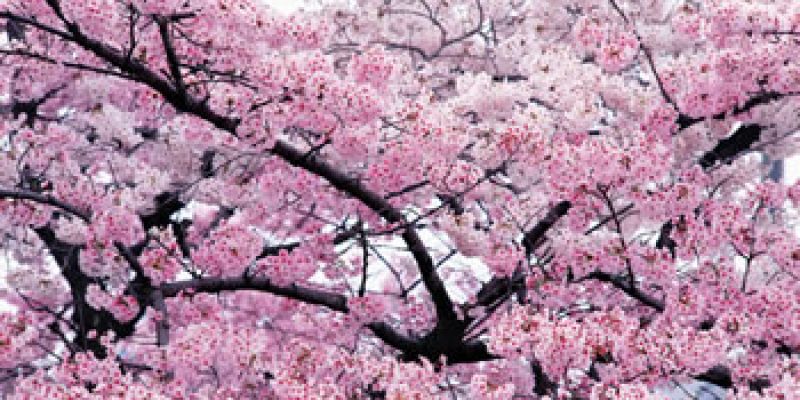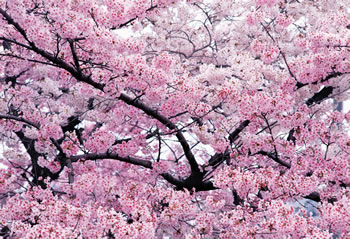
My Hero
On my first visit to Nagasaki’s Atomic Bomb Museum, the obscenity of the atomic bomb left me angry and disturbed. Amidst a 3,900°C heat carried by a blast equal to 21,000 tons of TNT, 80,000 human beings were obliterated in a millisecond – yes, 80,000 lives.

to make it a blooming hill full of children
smiling and singing.” – Dr. Takashi Nagai
From there, I walked over to the small wooden hut where, injured by the same bomb, Dr. Takashi Nagai spent the last years of his life. There I found healing. There my tidal wave of anger hit the shore and became a yearning to be Christ’s instrument of peace. I wanted to walk in the footsteps of Dr. Nagai who became my hero; I have met both his son and grandson. Through him I received a second call to mission.
“I want to bring life back to this dead place. I want to make it a blooming hill full of children smiling and singing.” – Dr. Takashi Nagai
Born in 1908, Dr. Nagai died in 1951. He started his life in a Japanese country village. In his youth he adopted a fashionable atheism that continued into his years of medical studies. He was at his mother’s bedside as she died and later wrote, “I was so sure that there was no such thing as a soul. But my mother’s eyes told me that the human spirit lives after death. I could not but believe this.”
He discovered the writings of Blaise Pascal, a famous scientist who passionately believed in God and prayer. Nagai fretted, “How to pray to a God he thought did not exist?”
As a medical student, he found convenient lodging with the Moriyama family who had been Catholics for 300 years. The atmosphere of joy in their home touched him. The Angelus bells from the nearby Cathedral at Urakami found an echo in his heart.
The Moriyama’s had a daughter, Midori, a school teacher who returned home for the holidays. “Come with us to midnight Mass,” she offered. Later Dr. Nagai wrote, “I felt instinctively there was a living presence in the community.”
Just before graduation, Nagai was stricken by a severe ear infection that prevented his use of the stethoscope, so he specialized in radiology. As a young physician, Nagai was twice drafted into the Medical Corps of the Japanese Imperial Army (1933 and 1937). Midori said, “I will pray for you,” and later sent him a wool sweater and and a catechism. He was ordered to China and wrote, “I have come to China not to win a war, but to help the wounded both Japanese and Chinese. I do not notice nationality.” He returned to Japan physically and mentally exhausted.
Nauseated at the barbarity of war, Nagai visited a priest at the Cathedral, pouring out his desolate heart and then joined a class preparing for Baptism. It shows the caliber of humility of this traditionally educated Japanese professor that his teacher at the church was a janitor at the hospital. He was baptized in 1934, taking the name of St. Paul Miki, one of the 26 Japanese martyrs.
A marriage to Miss Moriyama was planned. Before marrying Midori, he warned her, “Remember, radiologists die young.” She accepted nonetheless. Later, a son and daughter were born. They prayed as a family, and he prayed in his own unique way in which he would take just one line from a psalm or from the New Testament and keep “tasting” it throughout the day.
As a member of the parish St. Vincent de Paul group, he organized a team of doctors to go to remote doctorless villages where he found many were ashamed of illness. “Assistance is authentic only when it also restores a person’s dignity.”
As the war expanded, food shortages and cramped conditions led to a massive outbreak of tuberculosis in the early 1940s. The X-ray equipment Nagai used leaked dangerous levels of radiation that caused leukemia.
Sharing the news with Midori that he had been given three years to live, he knelt in prayer with her. “Midori’s acceptance has freed me. I can now face death because Midori is beside me.” But he was not to have that consolation. On August 9, 1945, an atomic bomb was dropped 700 meters from the hospital, killing 80% of patients and staff and leaving Nagai badly bleeding.
The hospital was unusable, but the still wounded streamed toward it. To direct people toward an open field where an ad hoc clinic was set up, Nagai raised an improvised Japanese flag on a bamboo pole, a white sheet with a red ball of Nagai’s own blood at its center.
Seizing a moment, Nagai went to the site of his own home. He found it totally destroyed and discovered the charred bones of his beloved wife with her rosary. That rosary, a twisted lump, can been seen in the Nagai museum, a testimony to a beautiful person of faith. Having absorbed more radiation from the blast, Nagai’s leukemia worsened. Still he served his patients.
Dr. Nagai knew Father (later Saint) Maximilian Kolbe whom he had X-rayed. Once he collapsed and prayed for healing to Kolbe. He regained the strength to carry on and only later learned of St. Kolbe’s heroic death in Auschwitz.
On November 23, 1945, Nagai was asked to speak at a requiem Mass for the 8,000 Catholics killed in the atomic blast. As a physician, sensitive to suffering, Nagai realized that survivors had deep wounds of the heart. “The greatest damage inflicted by the atomic bomb was the fact that we were confronted with the ugliness of our own souls and also that of our neighbors. It shattered our hearts and ruined human relationships.” The survivors had guilt about how after the blast they acted selfishly in not responding to desperate calls for water and help from the dying.
Conscious of the power of symbols to help, with a few men he located the still-intact Cathedral bell and got it ringing again to give courage and hope. He wrote a best-seller, The Bells of Nagasaki, and with the proceeds planted a row of cherry trees to raise morale. He also founded a library for children. “I want to bring life back to this dead place. I want to make it a blooming hill full of children smiling and singing.” The theme of hope pervades the thirteen books he authored, most of them still in print in Japan.
In 1946, Dr. Nagai collapsed and for the remaining five years of his life was confined to bed. “After collapsing, a new beginning. Even though I am flat on my back I have found that my hands, eyes and brain still work. I will earn my living with them.” His last three years were spent in a hut built for him by grateful carpenters. Nagai named it. “As Yourself Hermitage” as in “Love others as yourself.” Lying there with his children at his side, he continued his study of radiation sickness, wrote books, drew sketches, and with classic brush calligraphy wrote thousands of cards with the Japanese words, “Peace forever,” sending them throughout Japan and the world. He was visited by the Emperor, Cardinal Gilroy, Helen Keller and thousands of people. Takashi Nagai died on May 1, 1951.
The “As Yourself ” hut still stands. Nearby is a tasteful museum, staffed by his descendants who carry on his message:
“From this atomic wasteland of Nagasaki, we pray to God: Grant that Nagasaki may be the last atomic wilderness in the history of the world.”


 The Columbans are a society of missionaries, including priests and lay people, who minister to people of various cultures as a way of witnessing to the universal love of God.
The Columbans are a society of missionaries, including priests and lay people, who minister to people of various cultures as a way of witnessing to the universal love of God.